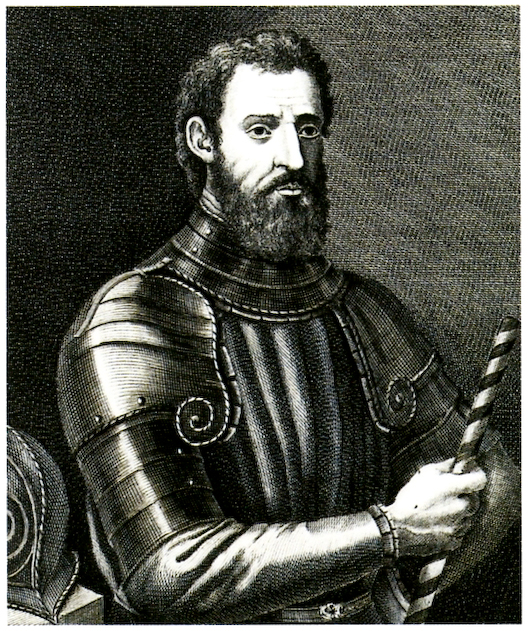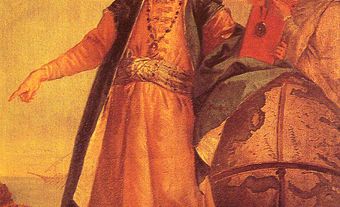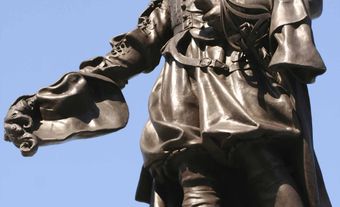
Early Life
Verrazzano was born to a family of merchants and bankers. He was well educated in Florence, then a centre of geographic and navigational science. As a young man he spent time in Cairo and Syria before moving to France between 1506 and 1508 to pursue a maritime career.
First Voyage
As was the case for many colonial powers at the time, France was concerned with finding a westward route to China. Verrazzano convinced France’s king, Francois I, to allow him to attempt to find the route under France’s flag. In 1523, Verrazzano left Dieppe with four ships in what was France’s first official voyage to North America. He was forced to take refuge in Brittany following a storm, and set sail again shortly thereafter with one ship, the Dauphine, and a crew of 50. Verrazzano sailed west and landed at Cape Fear, in what is now North Carolina. From there he sailed south briefly before following the coast north to Cape Breton. Verrazzano occasionally came ashore to explore; during one of these explorations he kidnapped an Indigenous boy to take back to France. By the time he reached Newfoundland he was running low on supplies so returned to France. He arrived back at Dieppe on 8 July 1524.
Final Voyage
In 1528, Verrazzano set sail on what would be his final voyage. The purpose of the trip was to trade for spices in the West Indies, reaching Florida, the Bahamas and the Lesser Antilles. On one of these islands, likely near Guadalope, Verrazzano went ashore and was killed by Caribs, the Indigenous people there.

 Share on Facebook
Share on Facebook Share on X
Share on X Share by Email
Share by Email Share on Google Classroom
Share on Google Classroom


